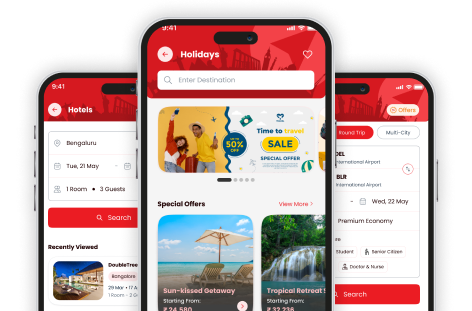Best Time to Visit Jaipur
Despite being one of the most popular tourist destinations in India, Jaipur is in Rajasthan, known to be one of the hottest states in the country thanks to its proximity to the Thar Desert. Thus, people are wary of visiting the city during the hot summer months and most people would also prefer to avoid the monsoons.
Jaipur has three distinct seasons – summer, monsoon and winter. It goes without saying that the best time to go to Jaipur is in the winter when the temperature is bearable and even delightful if you like chilly winds. But there are people who do want to visit Jaipur during the other seasons as well. Nevertheless, let’s take a look at what the seasons in Jaipur are like and which of them would be most suitable for visitors.
Summer in Jaipur
Since Jaipur is in a semi-desert region, the summer here can be powerfully strong, sapping energy levels significantly. The summer months are from March until July and it is not recommended to travel to Jaipur at this time as the heat is strong and often unbearable. Maximum temperatures have been known to go all the way up to 45 degrees during summer and the intense heat, dust and pollution make it very difficult to do anything, let alone do some sightseeing. Hot winds can cause heat strokes if you are not careful and you will want to stay within the air-conditioned confines of your room, which is rather sad since your trip is all about exploring the gorgeous city.
It is advisable to avoid planning to visit Jaipur at this time because the heat is very tiring, and you won’t be able to see any of the famed tourist spots with the sun beating down on you. However, if you do find yourself in the city at this time, do remember to drink lots of water and juices. Wear light cotton clothes and invest in a good pair of sunglasses. Gangaur, a festival that celebrates the union of Lord Shiva and Goddess Parvati is celebrated during summer. This is one of the grandest festivals that is celebrated in Jaipur and there are processions and palanquins that are taken out on the roads. Rajasthani folk performances are also common at this time and it’s quite an enchanting spectacle if you can bear the heat.
Monsoon in Jaipur
Monsoon in Jaipur lasts from July to September and is a period of intense rain. Monsoon begins when the summer sun heats the Thar desert which results in an area of low pressure. This draws moist air from the Arabian sea and when this air cools above the land, it results in monsoon rains. The good thing about the monsoons in Jaipur is that they fall late in the day. This allows visitors to explore the city during the day and many people consider it the best time to travel to Jaipur.
Also, most hill stations at this time are off the tourist radar because of the possibility of landslides. During monsoon however, Jaipur is free of most tourists and several of the famed places like forts and palaces are relatively crowd-free. The humidity is quite high but when the rains come, they wash everything clean. It’s simply wonderful to explore the City Palace at this time when there are hardly any other tourists around.
Jaipur Winter
Winter is considered to be the best time to visit Jaipur. Lasting from November till February, the temperatures are cool and in fact, can go quite low during December and January. It’s considered the high season and you will not be surprised to see that hotels are all filled up and flight prices are often sky rocketing.
During winter, the allure of Jaipur is amazing. From the sights and sounds, to the food you can enjoy, everything is simply wonderful. Cold winter evenings call for crisp jalebis dunked in steaming milk, a combination that will enthral you and leave you wanting more, calories be damned.
Winters are also the time when you will get to see several Rajasthani folk performances such as music and dance. While you may have seen several of those on TV, seeing it in person is rather electrifying. Certainly something you don’t want to miss.
The cool weather makes it easier for visitors to check all the famous monuments. However, since everyone else also has the same idea, be prepared for crowds! There will be people at all the well-known places such as City Palace, Amber Fort and Palace and even Hawa Mahal. The bazaars are also going to be crowded and you will have to get used to the constant swirling mass of humanity around you. The temperatures in the evening are known to drop to as low as 5 degrees and it’s a good idea to carry some warm clothes with you – sweaters and shawls are definitely recommended.
Winter is also the time when several festivals are celebrated. In January alone, there are several iconic festivals such as the Kite Festival, Jaipur Literature Festival and Jaipur International Film Festival. You can certainly count yourself lucky if you have managed to be a part of these festivals and it is no wonder that winter is considered the best time to visit Jaipur.
Once you have decided the best time to visit Jaipur, then do remember to visit the SOTC website for some excellent offers and deals. There are several interesting deals on Jaipur tour packages and Rajasthan tour packages available which will make your booking easier and hassle-free





